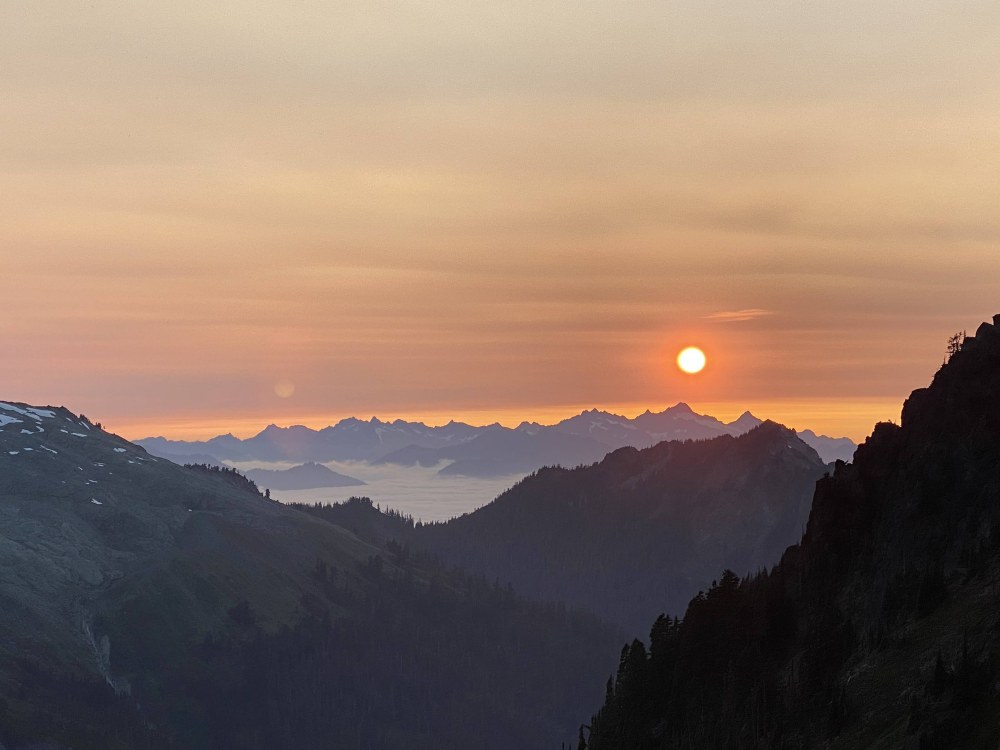
When Justin and Amy invited me to join on Bacon/Canadian Bacon Peaks, my first thought was, “Isn’t that way back the heck back there?” My second was, “I better do this so I don’t gain the covid-20."
The available beta for the trip was a little vague and the various trip reports describe a number of different ways of getting there (with more turnarounds than summits). We agreed on the approach below Mt. Watson (North) and Justin’s previous attempt would be beneficial in filling some of the info gaps.
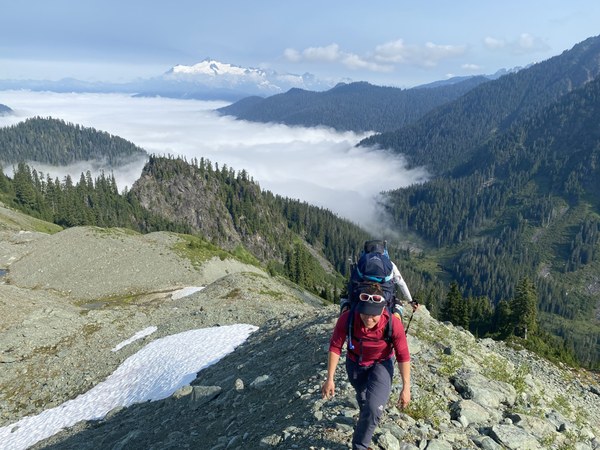
We began the route at 7am on the Anderson/Watson lakes trail before splitting off to the climber’s trail leading to Watson Peak. We followed this route up past a small saddle before heading East across a series of rock ridges and meeting up with the Watson Glacier/snowfield below the Watson’s ridgeline. Being late season, we had to negotiate some ice and agreed that it’s better to stay low (confirmed on the way back) and traverse at 5,500’, slowly losing elevation to about 5,100’ to bypass a rock buttress. In order to continue the generally eastward traverse, it is then necessary to ascend back up to a notch at 5,400' to pass over to the Noisy-Diobsud Wilderness area on the South side of the ridge line. On the South side, the cliffs appear difficult to traverse, but there are two short scrambles and quite a bit of side-hilling that allowed us to avoid losing much elevation.
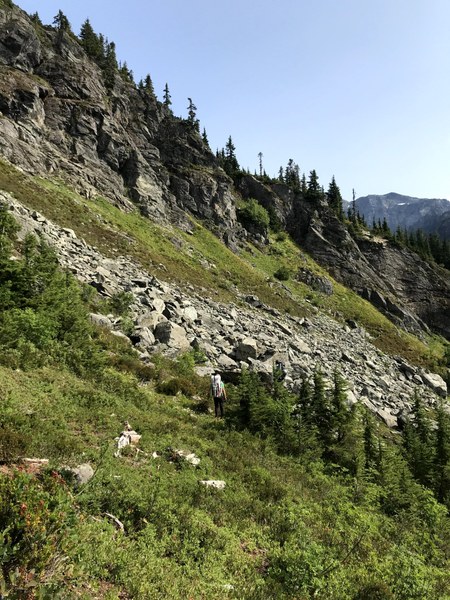
At 12:15pm, we passed through the 4,900' notch from south to north and started descending roughly 700' northeast down around the cliff band. It was a full-on bushwhack down steep, wet terrain leading out to the valley and over to the west slope of Bacon. The ascent up the steep loose talus, scree, and heather field, pulling on heather, blueberry bushes, even clumps of grass for veggie-belay, will frustrate and wear out most climbers.
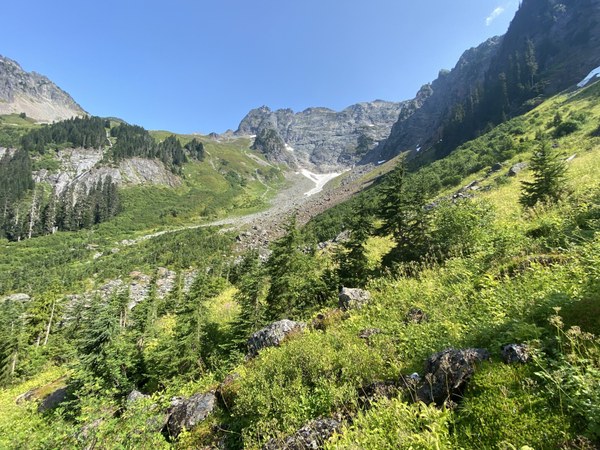
By 7:30pm we reached a bench at 5700’. A curved ridge above forms a bowl, with a small pond of snow-melt, whose drainage forms a creek below that is convenient for gathering water. And while there was some temptation to continue onto the camp at 5900’, we didn’t see an obvious source of water for the location. We also discussed summiting that night, but after the continuous rugged terrain we had already enjoyed that day, taking it easy seemed way more enticing.
We camped on the snow, but discovered later there are some flat spots on the other side (north) of the creek that would have been nice, especially for my little bivy.
(I thought this was a beautiful spot for a bivy until the wind started blowing…)
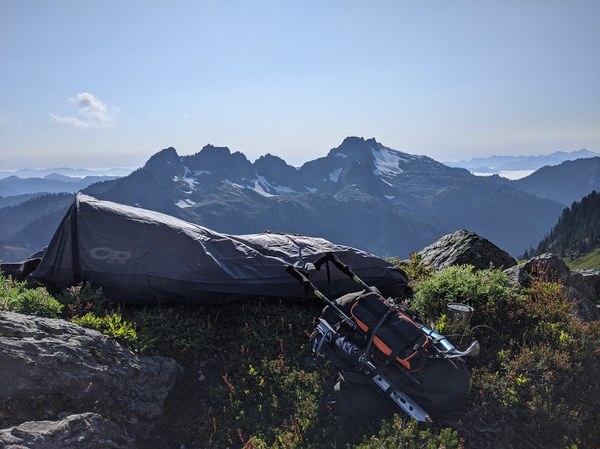
Sunday, we started at 7:30am, following a clockwise ramp around the snow melt pond, then up the slope, ascending to a snow field bench at 6,700' north of the summit (8:45am). The standard route up the glacier was melted and had a large section of alpine ice 2+ with a fall potential presenting severe consequences – aka ice cliff. A little concerned about that, we decided to scramble a short section or rock leading to the snow field on the northeast side. We were happy to see that it led to an approx. 20-degree knife edge slope leading to Bacon’s summit. We strapped on the crampons and helmets and got out the axes, but didn’t feel the rope was necessary.
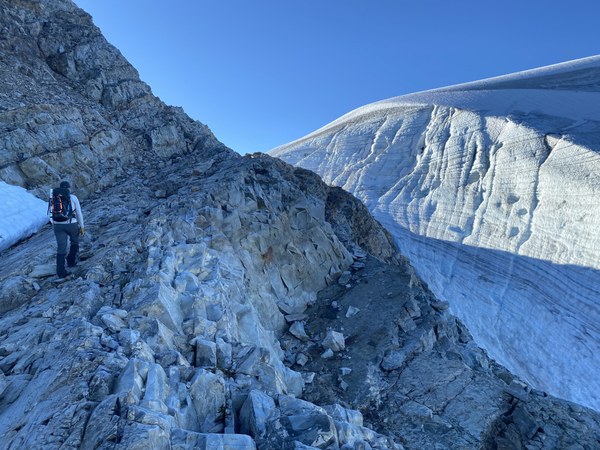
9am: Success!
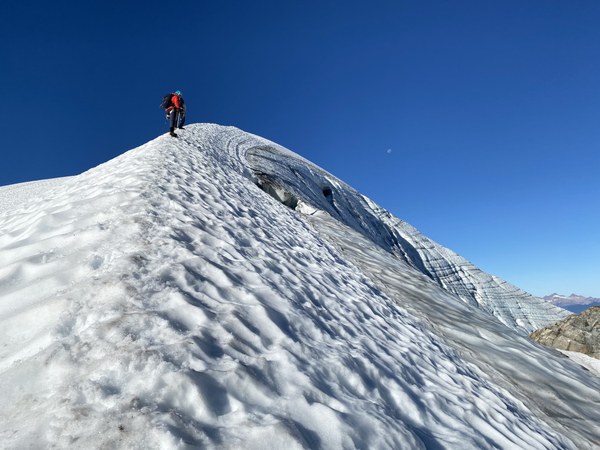
From the top, Canadian Bacon beckoned to us, after some snacks, signing the register, and discussion of the time it would take for the lengthy hike back, we tentatively decided we should scrap it this time and started back down (9:45am). However, after the quick 15-minute descent back to the snow shelf on the northeast side of Bacon, we chatted a little more about Canadian Bacon and it was clear all 3 of us really wanted to climb it, and we had the gear and supplies to make the possibility of another night out a reasonable option. So, we cruised down the East slope and over to the rock ridge of Canadian. It turned out, a mix of scrambling the ridge and walking a bit on the snow made this a fun and quick climb, reaching the top at 10:45am. There were some additional views of the traverse route toward Hagen and Blum from that perspective which was exciting for me, a future goal that’s been on my list for a couple years.

At 11:00am, we started descending and were back to the 6,700' bench on the north side of Bacon at 11:45am. Another party of three was coming off the summit and down the icy section of the standard glacier route that we had opted against, and while they didn’t appear to be having difficulty, I was still very pleased with our alternate route.
After chatting with them a bit and putting our glacier gear away, we headed back down, reaching camp at 12:45. We started descending the heather and talus slope at 1:30pm which was way more fun than its awful ascent the day before. After the shwack-fest back up the other side, we passed through the notch from north to south (4900’) at 3:45pm. On the south side, I actually found the route-finding a little more challenging because of the way the terrain obscured/blocked sight of the key passage points.
Once back on the north side of Watson’s ridge line, we took a slightly lower route than we did on the approach and travel was straight forward.
After we reached the Watson/Anderson Lakes Trail, we cruised quickly and were back at the cars by 8:30pm.
Notes:
Several reasons make Bacon Peak a better early to mid-season climb, most important being ease of travel over the long traverse below Watson, easier descending bushwhack & talus ascent up the West slope of Bacon, and finally a more direct ascent up Bacon Peak. Late season, the final approach up Bacon Peak becomes an Alpine Ice 2-3. Our GPX track shows an alternate route we took to avoid the exposed glacier. Late season there is almost no water available after passing through the North to South notch until reaching camp at 5,700'. This would generally be a difficult 2-day climb for basic students. The distances, elevation gain, bushwhack, & uphill talus can all make Bacon/Canadian Bacon a difficult 2-day climb for newer climbers or larger parties. Consider taking 3 days & tagging Watson Peak and staying at the Diobsud Lakes.
 Tim Duryee
Tim Duryee